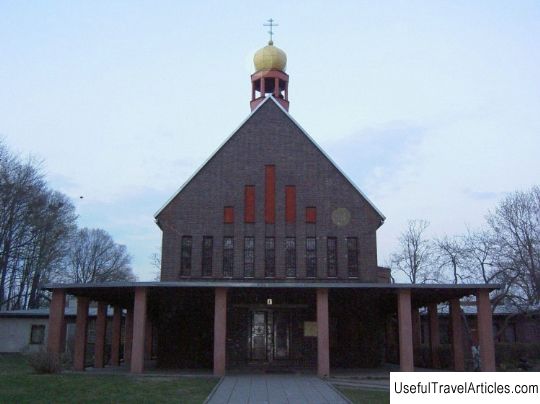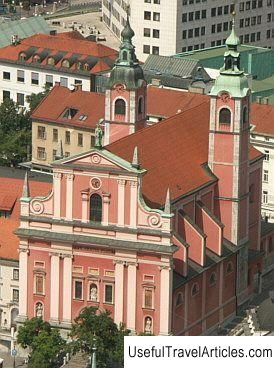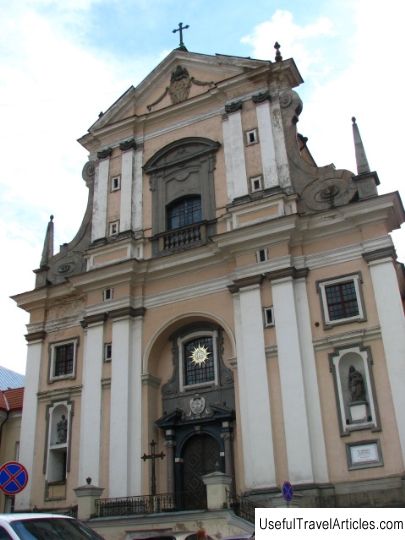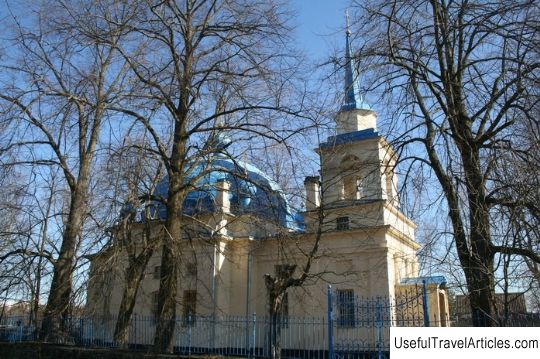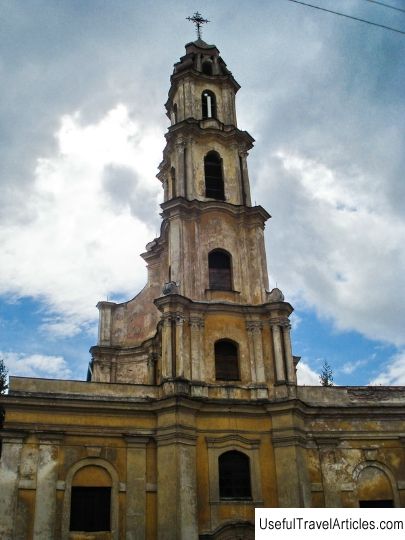All Saints Church (Visu Sventuju baznycia) description and photos - Lithuania: Vilnius
Rating: 7,5/10 (100 votes) 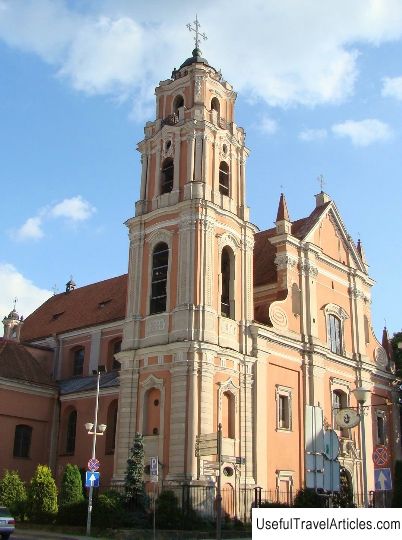
All Saints Church (Visu Sventuju baznycia) description and photo - Lithuania: Vilnius. Detailed information about the attraction. Description, photographs and a map showing the nearest significant objects. The name in English is Visu Sventuju baznycia. Photo and descriptionThe Church of All Saints is one of the most valuable examples of reckless baroque churches belonging to the Roman Catholic concession. It is part of the ensemble of the novitiate (places for novices) and the Carmelite monastery in the old town. The church was built together with the monastery for 11 years from 1620 to 1631 near the Rudnitsky gate. During the hostilities with Moscow, the temple burned down and was significantly rebuilt during reconstruction in 1655. Later, in 1743, near the northeastern corner, on the site of the turret, a complex bell tower was built in the late Baroque style. In 1812, the temple was damaged by Napoleonic soldiers, who burned confessionals and pews. The French set up a hospital in the temple. The church was repaired and renovated in 1823. The Russian authorities abolished the monastery, and since 1885, nice apartments were arranged in the premises of the monastery, and since 1948 the church was also closed, having arranged a grocery store in it. From 1967 to 1975, restoration work was carried out in the church under the direction of the architect Aldona Svabauskiene. After the restoration, the temple functioned as the Museum of Lithuanian Folk Art. The restoration of the temple was carried out immediately after the change of the state system, in 1990 the temple was returned to believers and is still in effect today. The plan of the building of the church has the shape of a Latin cross, the shape of the temple is a three-nave basilica type. The peculiarity of the space inside the church is that the side naves are formed by the side chapels of the church. The side aisles are 3 times narrower and 2 times lower than the central aisle, separated from it by two pairs of pylons on each side. The nave vaults are cylindrical with lunettes. The main facade is of early Baroque architecture, the facade is divided into two tiers by a cornice, pilasters highlight its vertical axis. The facade is crowned by a triangular pediment with obelisks towering on the sides. The Renaissance portal emphasizes the central axis of the building. Earlier statues of the founders of Carmelite monasticism - St. Elijah and St. Elisha, made of wood were installed in the niches. A monumental four-tier bell tower, expanding downward, ends with a helmet and an openwork cross. The rusticated pilasters of the lower tier provide a striking contrast to the columns built into the corners. Corinthian pilasters of the second tier are decorated with a stucco motif. In the third tier, obliquely positioned side pilasters frame the columns. In the last, fourth tier, pilasters seem to grow out of volutes. The bell tower niche windows have various arched shapes and are decorated with stucco molding, and in the fourth tier the niche is still fenced with a decorative balcony lattice. It is assumed that the bell tower was built by the same architect who built the towers of the Carmelite church in Belarus. The walls and vaults of the naves of the temple, the domes of the side chapels are decorated with frescoes and ornaments, the frescoes depict scenes from the lives of saints and from the history of Lithuania. The decorative stucco molding that adorns the interior of the temple was made at the end of the 18th century. There are 18 altars in the church, decorated with sculptures of saints, frescoes and depicting scenes from their lives. The main altar was built presumably in the late 1780s, according to the project of Martin Kanfus. During the restoration work carried out in 1902 at the initiative of the priest Chudovsky, the frescoes were painted over,     We also recommend reading Sicani Mountains (Monti Sicani) description and photos - Italy: Sicily Island Topic: All Saints Church (Visu Sventuju baznycia) description and photos - Lithuania: Vilnius. |
